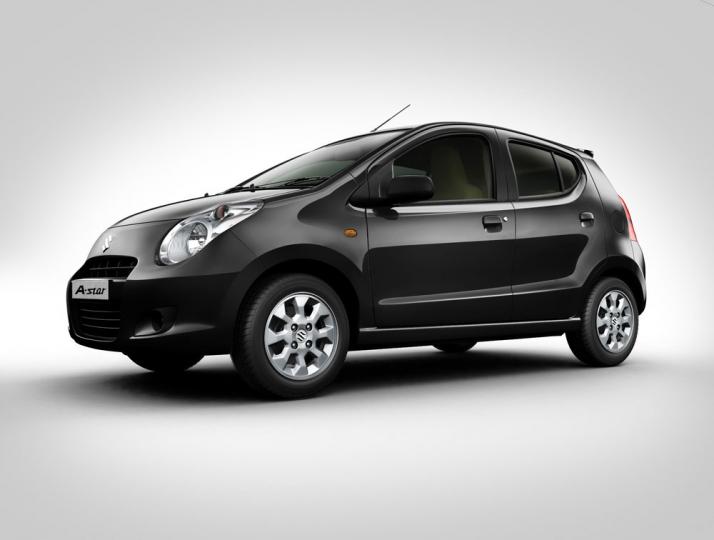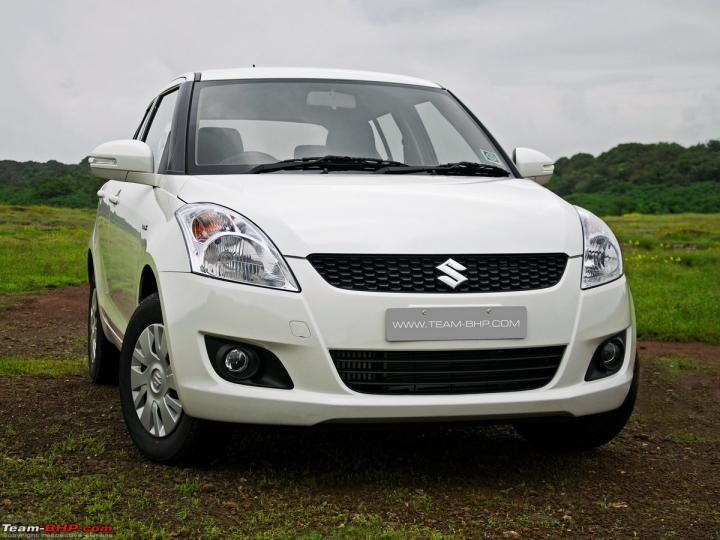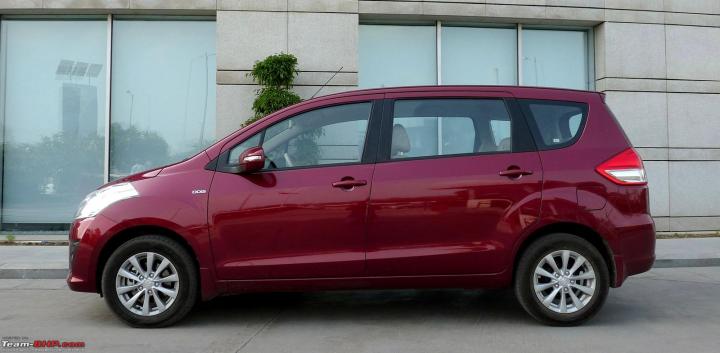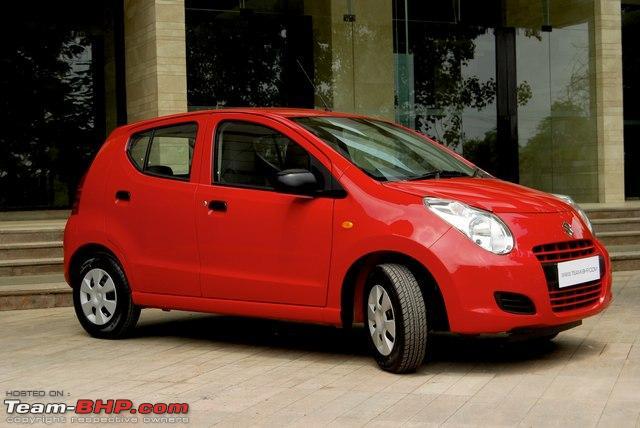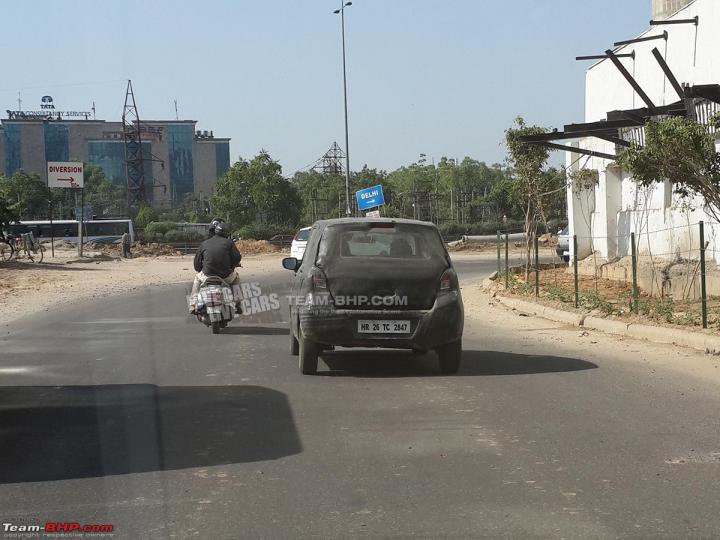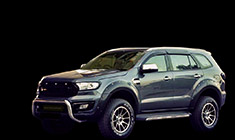News
My Suzuki Alto ownership report: A student's trusty ride in the UK
Owning this car turned out to be an incredible experience. I drove nearly 30,000 miles in a year, which is my personal best in any of the vehicles I have owned.
BHPian Amby955 recently shared this with other enthusiasts:
My Suzuki Alto (A-Star in India) in the UK
This is while doing Masters in England, circa 2021-2024. Being a guy with liking to cars, the first thing I did after settling in was apply for a UK driver’s license as soon as I became eligible (six months after arrival). It took another six months to clear the tests (in first try with zero faults), thanks to the long waiting periods. Main purpose of getting a drivers license was to continue renting cars, which I did earlier with my international license and which is valid only for a year. However, my urge for driving wouldn’t let me stop at rentals—I needed my own car.
I always had access to cars/bikes in India, and living without one was not easy, this obviously increased the urge of buying one. Although the smart idea was to continue renting cars as needed, my heart thought different. Anyway, as fate would have it, I went with my heart and decided to buy a car, but on a strict student budget, I needed something affordable and practical that wouldn’t become a financial burden.
So I created a checklist to help me narrow down my options:
1. Small engine: Ideally around 1,000cc to stay in the lowest tax bracket.
2. Two-door car: Lower insurance costs compared to full size cars.
3. Fresh MOT: To avoid immediate maintenance.
4. ULEZ compliance: No extra spends other than the necessary expenses.
5. Brands considered: Toyota, Ford, Suzuki, Citroën, and Peugeot for their affordability and low running costs. Toyota, Citroën, and Peugeot had the same car under different badges called the Aygo/C1/107.
The car hunt began with no fixed timeline. If the right car came along, I’d buy it—otherwise, I’d manage without one. I enjoyed the process of searching cars more than the actual buying. Most options considered with the above checklist were disappointing: high-mileage examples with over 100,000 miles on the odometer, often in poor condition. I was okay with the high mileages but often these older cars were not cared for in the UK, provided the extremely cheap used prices for these vehicles. Beyond my check list, I did not have any demands in terms of features of the car, any bare minimum car was fine for me.
Unfortunately I do not have pictures of all the cars I test drove or looked at.
Ultimately, I found a 2011 Suzuki Alto with only 30,000 miles at a price that seemed too good to be true. And as expected the car was an insurance write off from an accident with a CAT S category, meaning it had structural damages from the crash. It was freshly repaired at a garage specialized in buying and repairing insurance write-offs. It had a replaced passenger-side door and a dent on the running board, this running board damage made the made it CAT S, but this did not raise any major red flags for me as long as it was repaid correctly. Did a short test ride and the car felt good, something similar from Marutis back in India and I felt confident with the car. Did find some minor issues including a bad alignment, bearing noise and no service history. But car seemed good and it had a fresh MOT, and they worked on the brakes before the MOT, car also had a good MOT history and the car was rust free. So, I shook hands and purchased the car on Valentine’s Day, of all days! Today is yet another valentines Day, 2 years since.
After sorting the ownership transfer and arranging insurance, I took delivery of the car in a couple of days with some of my friends. A quick stop for fuel and a short drive later, it was off to the garage for wheel bearing work, minor brake adjustments, and fixing a leaky windshield washer reservoir. Once these were sorted, I had a perfectly functional Suzuki Alto at my disposal.
Living with the Alto
Owning this car turned out to be an incredible experience. I drove nearly 30,000 miles in a year, which is my personal best in any of the vehicles I have owned. The car felt familiar, and performed very well for its size, even cruising comfortably at 70 mph (max speeds in UK motorways) with a full load. It has travelled the breadth and length of England, in the short time I owned it.
Ownership was a care free experience with just oil and filter changes every 5000 miles. For me the crash damage did not bother much and as expected the accident history did not give any issues. One thing I never fixed was the AC, it never worked on the car and I did not bother to fix as the climate was mostly cool expect for just a few weeks of unbearable heat every year and heater worked just fine.
As a decade old car and the kind of miles it was doing, I always carried some spares like a couple of bulbs, fuses, a set of wipers, bit of fluids and a decent tool set along with an emergency kit to stay warm if stuck somewhere. Fortunately, I only had to use some bulbs and wipers as the replacement.
I always made sure the car was maintained perfectly on the mechanical end of things, and on the other hand I did not bother on the cosmetic end on things. To be fair the car looked decent cosmetically expect for a few dents from banging doors while parked, thanks to small parking bays. I could live with that, also never bothered to wash my car, I have done a total of 3 washes during the time, 2 of them after some really cold weather and the other for MOT. Just before selling the car, bought a £2 dent removal tool over temu and pulled them back and the car looked just fine with another proper wash for the new owner.
Maintenance
I always took my car to this garage that was run by an older gentleman, he took great care of the car. After doing the first 1000 miles, I gave the car for a service to change all the fluids, sparkplugs, filters and gave it an overall checkup. This was done due to the lack of service history. From then on, I did general oil and filter changes every 5000 miles.
Apart from routine general service, here’s what I did:
1. Replaced all four tires, 3 of them for wear and tear and the 4th one tore while maneuvering to get on a footpath for parking, common way of parking in the UK.
2. Replaced some fused bulbs occasionally (expected for an older car).
3. Replaced a broken blower resistor.
4. Changed wipers a few times.
5. Never bothered to fix the AC as the heater worked fine. And the climate did not demand AC.
Interestingly, although the car was made in India (A-Star), some parts were different. For example, I brought a gearbox drain plug and fuel filter from India, only to find they didn’t fit this model.
One other interesting fact, the car had JK spare tire.
Insurance
I opted for third-party insurance to keep costs low and the value of the car did not matter much to justify a comprehensive insurance, any small claim would total the car. I had to adjust my mileage limit multiple times as my driving increased. A dashcam was also installed—not for insurance purposes, but just for safety. Of all the costs with the car, insurance was the most expensive.
Things I Loved About the Alto
1. Fantastic value for money—the main reason I bought it.
2. Surprisingly capable on highways, handling 70 mph with ease.
3. Fuel efficiency: the best I got was 14 miles per liter on motorways.
4. Minimal maintenance costs and low annual tax (£20).
5. ULEZ compliance meant no extra fees in major cities.
The Farewell
As fate would have it, my time in the UK have come to an end after completing my Masters and securing a job back in India. That meant, it was time to bid farewell to that beautiful country, great friends and of course NU11 HMH (Alto). But the memories of this car and the drives me and my friends had on that car will always stay alive as good ol memories!! Anyway, after this 30,000+ miles of joyful ownership, I sold the car to a friend of mine for almost the same price I paid—great value, I would say. That checklist really did work out, I guess. Despite moving back to India, I still cherish the memories I made with this Alto. I still use the NU11 HMH (Alto) keychain on my new ride here in India, a small reminder of a car that gave me so much joy (Pic Attached).
Now, back in India, instead of taking the conventional route and buying a car, I decided it was now or never for experiencing a motorcycle. So now I own a RE Hunter 350. The experience to this day has been great with the bike but there are changes, I had a blast driving in the UK with friends, it was filled with jokes, laughs, trolls, songs and what not. But today I ride alone, enjoying the peace, road and the machine for hours on end, that’s pure joy too.
You can read a brief about the bike journey here: https://www.team-bhp.com/forum/motor...ml#post5914775
Below are pictures to pleasure your eyes (Me flexing on TBHP t-shirt with Alto reg on):


























Only thing left of the Alto

Check out BHPian comments for more insights and information.
News
My experience getting my 2009 Maruti A-Star's RC renewed at KA-03 RTO
Though I spoke in Kannada, at no point in time did I feel that language would be an issue. The RTO officers were open to other languages.
BHPian rajathv8 recently shared this with other enthusiasts:
My 2009 Maruti A-Star was up for its RC renewal this year at KA-03 RTO. I decided to start the car prep works 2 months before the expiry and get the inspection done 1 month before the expiry.
Car prep:
The A-Star was in fairly good nick with no major dents or scratches on the body panels. The bonnet had a few scratches and the roof had a few small dents (thanks street dogs!) but nothing one would lose sleep over. All lights were functional without any major cracks/damage. Passenger side headlight had a bit of yellowing. One tail light had a 5cm crack but it did not have any water ingress and the crack was visible only at close quarters.
The front and rear bumpers took the brunt of Bangalore's close-knit friendly traffic. The front bumper had a few dog bite marks and paint chipped off in some areas. The rear had a 2-inch tear in the lowest center region. A rear-ending incident had left very obvious and nasty-looking scratches on the passenger side of the rear bumper. Both bumpers were mended and repainted.
While the IND plates on the car were fine, to avoid any scope for trauma, I installed HSRP plates post-bumper repaint. Made sure to get the windshield sticker fixed as well.
The 15-year-old OEM horn was weak at best. It occasionally squeaked like a mouse but remained in silent meditation the majority of the time when I needed it. It was replaced with a MindaUNO D95 horn pair.
The Oct 2018, 28K run MRF ZLX tyres had sufficient tread left.
The mirror caps had many visible scratches on them which I left unattended.
All glasses were in good condition and without any sun film.
The A-Star had no aftermarket accessories apart from a Pioneer HU and a dashcam.
During the car prep phase, I met some interesting folks, had some nice conversations and engaged in some DIY. All part and parcel of a healthy long-term car ownership.
Paperwork:
The process is fairly straightforward and has been described in sufficient detail in previous posts. I applied and paid Rs.6762 online. Got all the papers in order with a file and envelope.
- Form 25 - printout with chassis number pencil imprint at the bottom
- Fee paid receipt – 2Nos, printout
- Receipt of online application - printout
- RC card - original in a small zip lock pouch
- PUC - copy
- Insurance - copy
- Aadhar - copy
- Self attested envelope
- RTO file
I carried a bunch of additional documents since I didn’t know what to expect. PAN/Aadhar/marriage certificate/horoscope the lot!
Drinking water, snacks and a cap go a long way to make things pleasant while waiting for the inspector in the blistering heat.
Inspection:
The big day! Where every beloved car owner is made to feel powerless!
Washed the car in the morning, prayed to the powers above and headed to the RTO.
This is how the stars aligned:
10:25am:
Bought a file/envelope, arranged stuff. Made my way to 2nd floor - all paperwork was restricted to 2nd floor only.
10:35am:
Counter 5. Docs were checked.
10:55am:
Counter 3. Docs were checked again against entry in computer, file handed back. Was asked to proceed for the inspection.
11:00am:
Reached inspection area. I was 13th in the row on a Saturday. Count went up to 20 by the time I left.
12:05pm:
Two-wheeler inspection starts
12:10pm:
Four-wheeler inspection starts
12:40pm:
A-Star passed with flying colours. No comments, no questions, file handed back to me. Was asked to head back to RTO room 20.
12:50pm:
I am No.3 in the queue for room 20. This is the Vehicle Inspectors office.
1:15pm:
Inspector arrives. I present my file. Inspector signs and seals the Form25. Assistant inspector checks the file, makes notes in his notebook and hands the file back to me.
1:20pm:
Submit the file at Counter 1. Details were entered in the computer. I was asked for any other document which could be stamped as acknowledgement. I handed the extra fee paid receipt. It was stamped, signed and handed back.
Less than 3hrs and I was done!
Details about the inspections:
The inspector and his assistant approached the car. The bonnet had to be kept open. The assistant inspector peeked in the engine bay, he closed it and asked me to start the car. At this time the inspector took a walk around the car and checked the file. He had a notebook in which he would jot down any irregularities/fines. This notebook was later checked before signing the form-25 in room 20. When the car was started, the inspector glanced at the tailpipe. In my case, the electricals, tyres etc. were not explicitly inspected. The inspection was done in under 5 minutes!
Every single car before mine had some or the other questionable qualities - I believe this greatly helped my cause. The defects ranged from broken bumpers, cracked lights, massive tyres and alloys popping outside the bodyline, visibly faded paintwork patches, bald tyres, bright-red horns visible through the grill, aftermarket aux-lights, rusting on fender/running board, rusting on the shock towers under the hood, rusted out chassis number (could not take chassis imprint on form), shabby paint touchups, painted stock alloys. You name it, they had it!
The wait:
After the inspection on 18th May, the application was approved on June 25th. Vaahan reflected the updated expiry date. I received an RC dispatch SMS with a tracking number on 19th July, but the tracking number was incorrect. I was unable to retrieve the details from Speedpost. I decided to wait it out. Finally, I received the RC card on 25th Aug - 3 months and 7 days later.
Other points:
- Though I spoke in Kannada, at no point in time did I feel that language would be an issue. The officers were open to other languages.
- The flow and proceedings were smooth, no confusion.
- Majority (if not all) other four-wheelers came with agents
- I did not at any point feel I should have enlisted the services of an agent
- The RC arrived in an envelope without any tracking number on it and it was not in the envelope I had attached in the RTO file!
- Throughout the whole process there were only two phases of strain - 1. Getting the car ready – identifying what should be fixed and what is acceptable. It's anyone’s guess really and all boils down to the mood of the inspector on that day. 2. Waiting for the RC to arrive post inspection. This took an unusually long time.
Acknowledgements:
Thanks to all the folks who posted on this thread. Without the treasure of details here, I would not have got through this as smoothly as I did.
Pictures:
The car as presented

Notice the slight fading of the headlight. Also, notice the rotting vehicles in the background below the dried vegetation.



Queue of vehicles before the A-Star

Form-25 with seal and sign just before handoff to the last clerk

Fee paid receipt handed back as acknowledgement

Check out BHPian comments for more insights and information.
News
Bought a used Suzuki Alto in Berlin: Ownership & driving experience
Every drive in it so far has offered new learning about German driving rules, Berlin's exceptions to those rules, and car ownership outside India.
BHPian vigneshg recently shared this with other enthusiasts.
A short story of how I bought my first car—a used Suzuki Alto (A-Star)—in Berlin:

Introduction
Like many of you, I'm a permanent fly on this massive wall that is Team-BHP. I love reading your reviews and travelogues. I don't contribute as much or as frequently as I'd like to, but I like to think I'm still every bit a BHPian. I love driving responsibly and sharing the joys and pains of car ownership with a community. The last time I wrote here was to report on the retrofitted LED daytime running lights of my Maruti Suzuki Estilo (LED Fog Lamps as DRLs). That was nearly a full decade ago, when I was still living in Bangalore, in college, and had the time to experiment. Since then, I've graduated twice, found (and lost) many jobs, married the love of my life, sold my dearest Estilo and moved to Berlin for work.

It took me the better part of a full year to convert my Indian driving licence to a German one because the conversion process is excruciatingly long and complex, but that's a story I'll save for another post. In fact, sharing my experience might help newcomers to Germany. For now, I'll share my experience of buying my first car in Germany.
Addressing the desire to buy a car
Berlin's public transportation network is vast, and you can get to most places within the large city without ever relying on a car. Besides, parking in the city centre is next to impossible, and of late there's been ample display of rage from climate activists. That's why 95% of my colleagues, friends, and neighbours dissuaded me from buying a car. Making the purchase less justifiable are the many easy car-sharing options (from Miles, Bolt, etc.), which allow you to rent a car from the city streets for something like €1–2 per kilometre. Logically speaking, you never need to buy a car.
But after selling my Estilo, I was itching to get behind the wheel of a suitable replacement. I wasn't looking for anything fancy: just a much shorter hatchback with a peppy motor and a manual gearbox. With cars quickly becoming increasingly digital and electric—rental ones especially, I wanted to spend my 30s still effortlessly clutching in and out and shifting swiftly through straights and bends. For all we know, my next car might not offer this mechanical thrill. So I decided to stand firm on my desire to buy my own car in Berlin.
Picking a car and dealer
I knew I wanted my first purchase to be a used car so I get enough practice driving the German way and spend less on insurance. For about three months I oscillated between models that fulfill driving pleasure and practicality. Every day I would spend my commuting hours browsing AutoScout24, mobile.de, and Kleinanzeigen (the classifieds). My heart warmed at the sight of a Volvo V40, BMW 118i, and the Suzuki SX4 hatchback. Meanwhile, my wallet preferred the likes of the Toyota Aygo (aka Peugeot 108 and Citroen C1), Kia Picanto, and Fiat Panda.
I was open to buying from both private sellers and used car dealers (Autohändler), but I was keenly aware of the risks of both. With private, you can be very right or very wrong, depending on how good a judge of character and car you are. If you're right, you drive away with a very good deal. With dealers, you pay up to €1500 more, but you rest assured that you get a 6-month guarantee on the motor and gearbox, even if it's mostly a placebo.
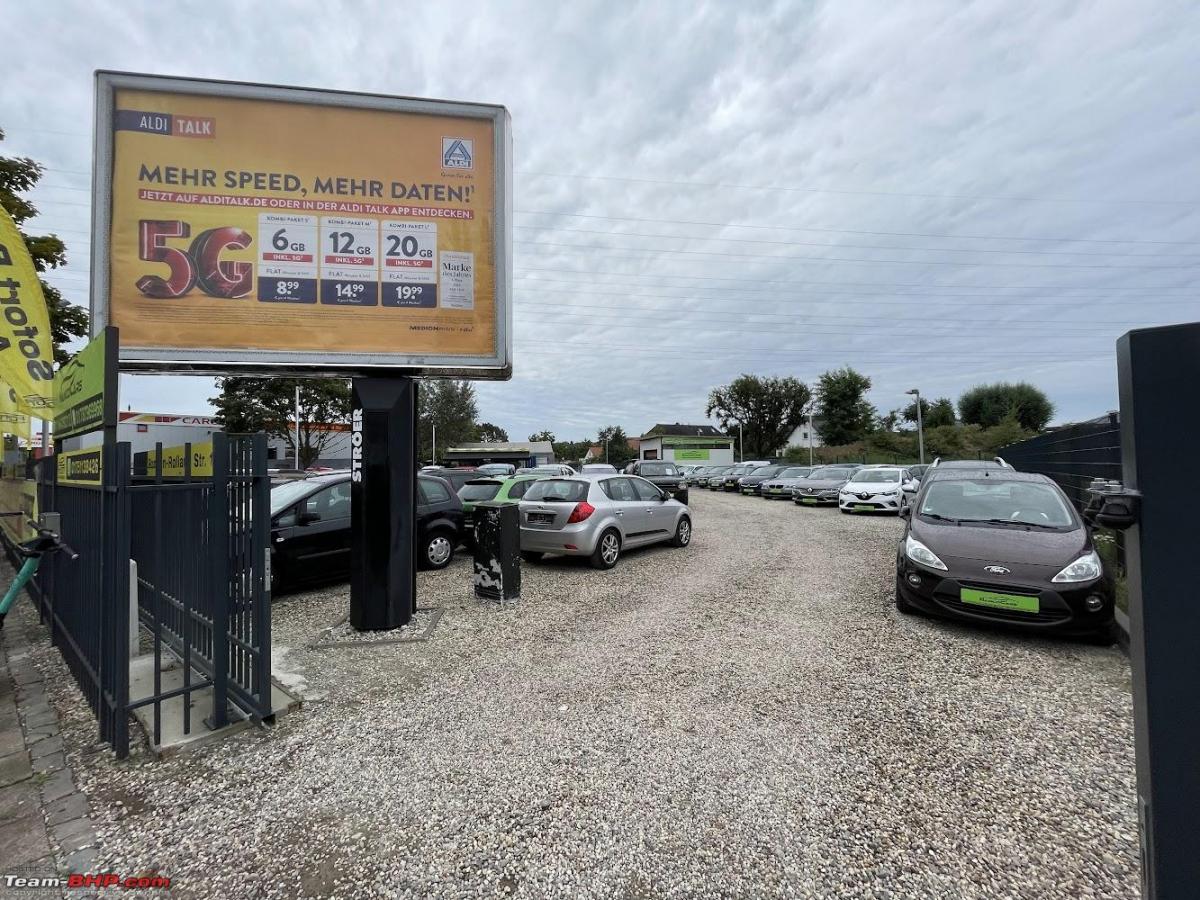
I came close to sealing the deal on a Ford Ka (private, 2004, 160,000km, €1400) and later a Subaru Justy—basically a Perodua Myvi with a bulletproof 1L Toyota motor—(dealer-sold, 2009, 100,000, €3890), but somehow I just couldn't bring myself to do it. I was really torn between the two types of sellers, and I just wasn't sure how reckless this transaction was. Some personal commitments also took priority, and the offers just slipped away. A week or two before my birthday in September, I grew tired of comparing offers and sellers, so I just went for the most sensible-looking option at that point: a Suzuki Alto, first registered in 2010 with 100,000 km on the clock.
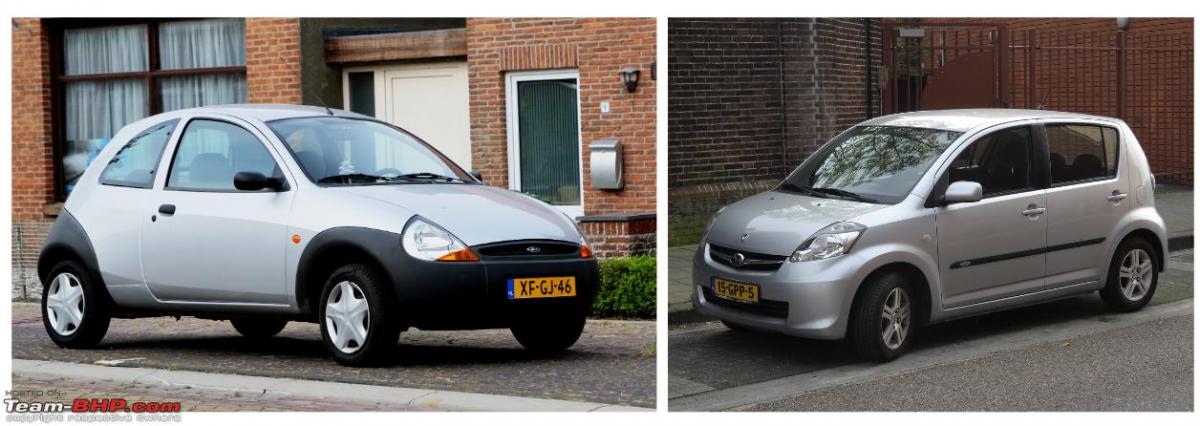
Finding the Alto
The Suzuki Alto sold in Europe is basically the Maruti Suzuki A-Star with a beefed-up safety kit. Between 2008 and 2014, A-Stars were manufactured at Maruti's Manesar plant and shipped through the Mundra port to be sold in various European countries as the Suzuki Alto and Nissan Pixo. Having grown up around mostly Suzuki cars, I felt comfortable at the thought of making the Alto my first car in Germany. The car would carry me and my wife most of the time, so the poor rear legroom and small boot did not deter me. After my Estilo, I wanted a break from tallboy models, so I was happy the Alto wasn't one. However, I had to make my peace with the Alto's modest 1L K10B 3-cylinder motor. The consolation was the ~5L/100km (20km/l) fuel efficiency rating.

The dealer at Flott Autohandel was asking for €3900 for the A-Star. A busy man attending to tens of visiting customers, the dealer allowed me to take a test drive of the A-Star. After a quick spin, I came back mostly happy. I went through the car's service history book, and nothing seemed particularly off. That said, it had some repainting and scratches here and there. I informed him of a few glitches (faulty front left indicator, depleted battery on the key fob, etc.). He said he would need two weeks to prep the car and have his mechanic fix the niggles. He would give it a full inspection, change the engine oil, get the biannual fitness and emission tests (Hauptuntersuchung and Abgasuntersuchung) done, and register it in my name with a preferred number. His registration fee was €150. Mostly convinced with this offer, I said yes, and I signed the contract to buy the Alto. I paid €1000 as a deposit.
Collecting the Alto
Two weeks later, after wrapping up work early on a Friday, I went to pick up the Alto. I was both excited and nervous. Car deliveries in India make you feel special like you've really earned your wheels. I was slightly disappointed by the absence of any celebration or warmth. The dealer was busy with many other tasks. He had just about enough time and patience to walk me through the money transfer process for the remainder of the amount and to hand over the keys.
I know I can't expect much fuss over a used hatchback. Still, I'd have appreciated a little more attention and care from the dealer. Going by the way he behaved through the entire process I may as well have gone there to pick up a used vacuum cleaner. This is one cultural difference that's hard to ignore.
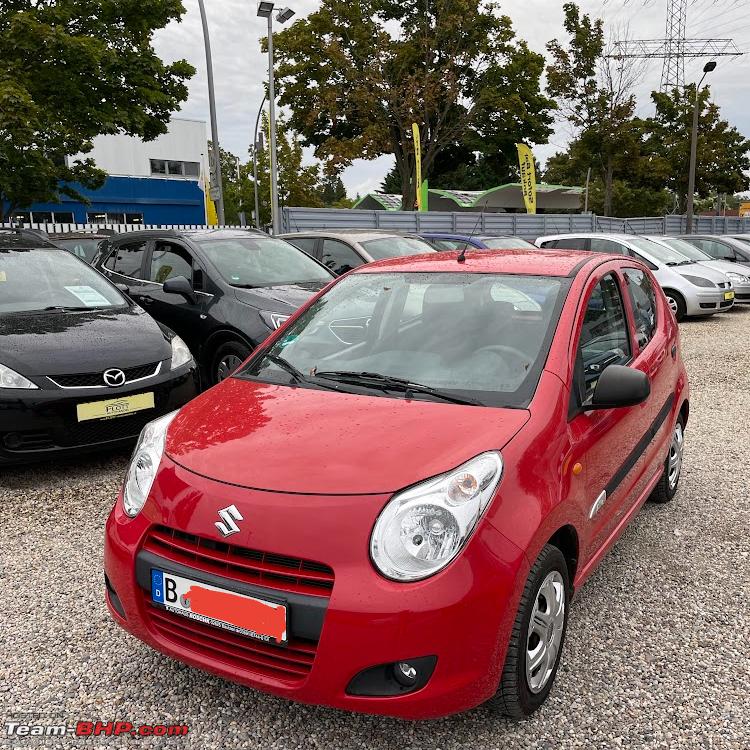
Fixing the Alto
The initial days with the Alto were a bit tense. I was somehow more concerned than happy. The battery seemed weak and the engine's idle speed felt low. I got a free battery check done from a nearby workshop chain, where they assured me the battery was fine. Another A-Star owner told me the idle speed was lowered for European emission norms. It was perhaps a matter of getting used to it. I also had to find a good insurance package. Luckily, the insurance broker the car dealer had referred me to gave me a good deal in the form of Allianz car insurance and ARAG legal protection insurance.
The front left indicator was still not working, and the battery on the key fob hadn't been replaced. Despite many heated phone calls to the dealer and a visit to his mechanic's workshop, I couldn't get them fixed. The CR1616 battery for the key fob wasn't easily available, and the dealer's mechanic said he'd have to call in an external electrician for the front left indicator. It was diagnosed as a case of damaged wiring. The dealer was ready to pay the electrician's bill if I could find an electrician myself.
Fortunately, both faults saw an easy resolution in good time. The key repairman near my home had the replacement battery for the key fob and charged me €5 for the replacement. After some research, I made a visit to Acit Autocenter (an unofficial Suzuki and Lada service partner), where a slightly elderly mechanic patiently attended to the wiring issue with the left indicator. He not only carefully soldered some broken wires but also didn't take any money for it. Given that Acit Autocenter has been my most positive experience with car service so far, I'm definitely returning to them for future repairs and regular services.
Living with the Alto
It's been a month since I eagerly (and trepidatiously) brought home the Alto. My wife and I have so far taken it around the city (weekly trips around the nearby areas of Treptow and Kreuzberg, to the Berlin-Brandenburg airport a few times, and to Wustermark). We also made a day trip to the nearby city of Cottbus. We have yet to plan a longer drive. Every drive in it so far has offered new learning about German driving rules, Berlin's exceptions to those rules, and car ownership outside India. There are still plenty of things that are new to me, including refueling the car and checking the tire pressure myself. With time, I'm sure I'll become habituated to these things. I hope to report again soon with updates on the Alto. Below are some pictures of the Alto. Cheers!
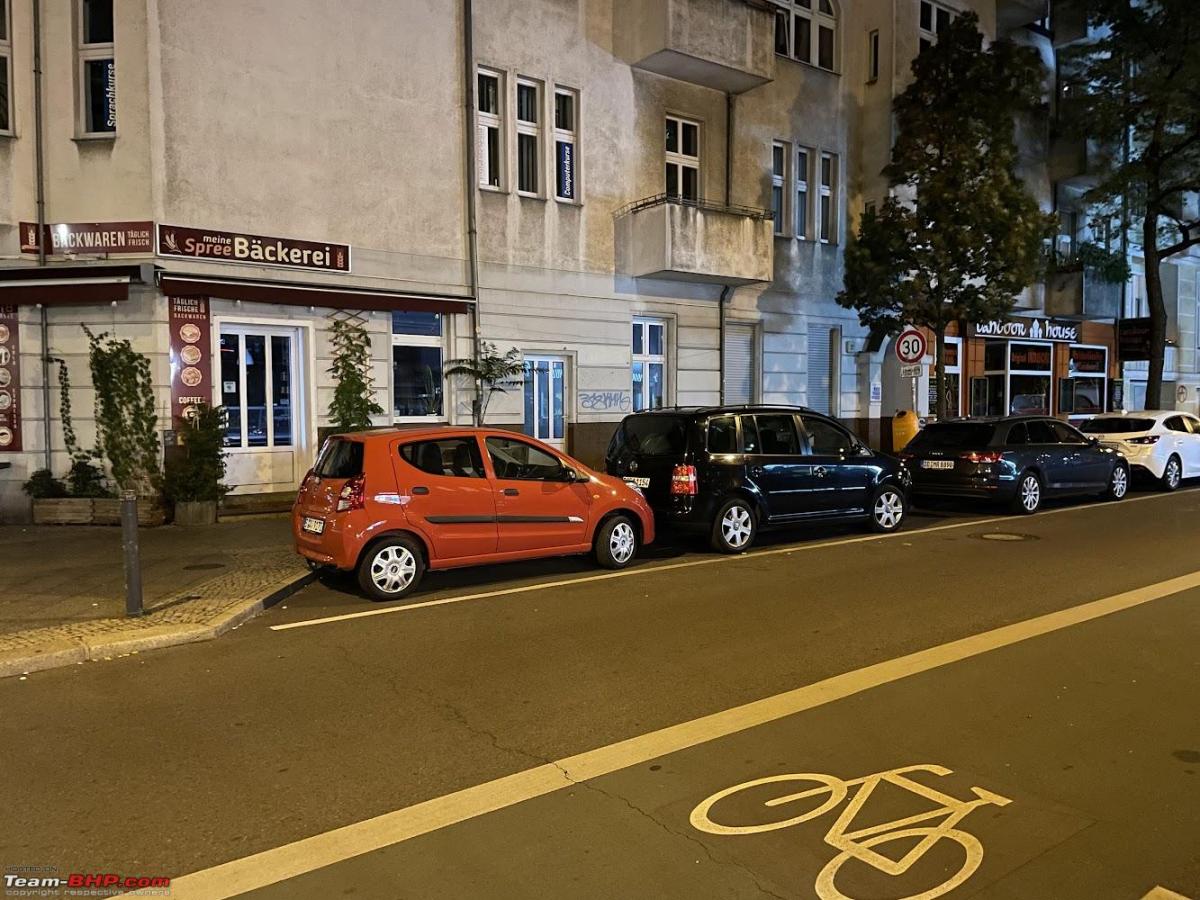
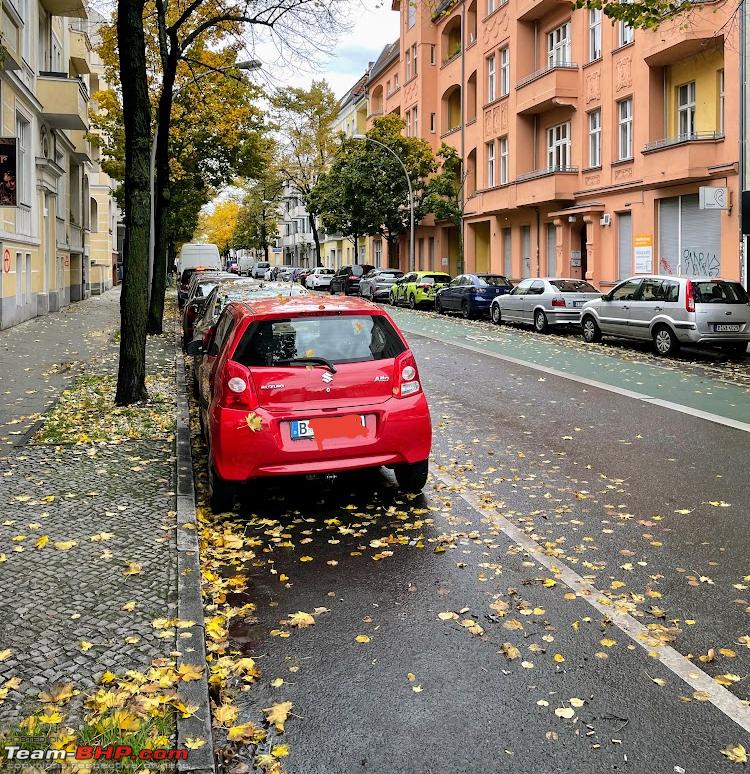
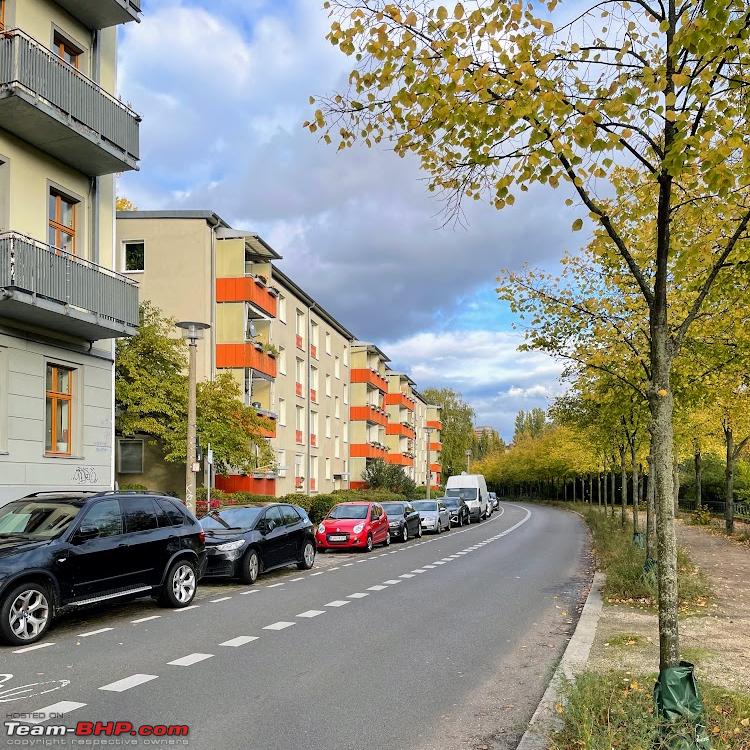
Check out BHPian comments for more insights and information.
- Tags:
- Indian
- A-Star
- Alto
- used car
- Car ownership
News
Maruti Suzuki to stop exporting cars to Europe for 15 months
Maruti Suzuki India Limited will halt its exports to Europe for at least one year, starting in the quarter April-June. The company is likely to restart exports to the continent in September 2015. This 15 month gap will mean a drop of 10% in the company's total exports for the next fiscal.
Maruti's exports to Europe will cease after the company ships out its last consignment of 15,000 A-Star hatchbacks in the next quarter. The A-Star has been the only model to be exported to Europe for the last few years. The production of the car has been stopped in India. Its replacement, the Celerio, will be shipped to Europe from Suzuki's Thailand plant. The reason behind sourcing the car from Thailand is that the Thai-built Celerio is a Euro-5 compliant model, while the Indian-built version complies only with Euro-4 standards.
Approximately 1.2 lakh cars are exported worldwide by Maruti annually, out of which, Europe accounts of about 30%. In FY 2013, the company had shipped about 24,000 units to the continent. In FY 2014, this number has risen to 30,000 units. While the halt of shipments to Europe will hit the company's overall exports, Maruti expects to soften the impact by increasing its exports to other markets like South East Asia, South America and Africa. When the company resumes its exports to Europe, it will do so with a new model, probably the YRA premium hatchback.
Maruti has been exporting cars to 125 countries worldwide. The company is gradually shifting its focus from Europe to emerging markets.
Source: Financial Express
News
Maruti recalls 1492 vehicles for faulty steering column
Maruti Suzuki has recalled 1492 vehicles to carry out an inspection of their steering columns. This recall is pertinent to Ertiga (306 nos.), Swift (592 nos.), Dzire (581 nos.) and A-Star (13 nos.) cars manufactured between 19 October, 2013 and 26 October, 2013.
If the steering column is found to be defective, Maruti will replace it free of cost. Maruti Suzuki has stated that its dealers would contact the owners of the affected vehicles.
Additionally, Maruti owners can log on to the manufacturer’s website and ascertain if their vehicles are in the list of recalled vehicles. Owners need to enter their car’s 14 digit alpha-numeric chassis number in the provided field.
Alternatively, owners can visit the nearest Maruti Suzuki dealer workshop to ascertain the same.
The steering column is an important component and it would be a good idea for owners to have their cars inspected, depending on eligibility.
News
After Estilo, Maruti Suzuki to discontinue A-Star hatchback?
Sales of the Maruti Suzuki A-Star, globally known as the Suzuki Alto/Celerio/Nissan Pixo, never took off in the Indian car market. The hatchback (also known as Suzuki Alto globally), which is a significant step-up from the Alto, was priced close to the WagonR, a move that ensured that the A-Star never got enough traction here. With a replacement for the A-Star looming large in the form of the YL7 hatchback, touted to be the next-gen 2014 Suzuki Alto, the stage seems set for Maruti Suzuki to discontinue the current-gen A-Star, just as it did with the Estilo hatchback.
The next-gen 2014 Alto, code-named the YL7, is likely to be launched at the 2014 Indian Auto Expo. The YL7 is said to address the issues that the current A-Star faces, in the form of a cramped rear seat and the general lack of spaciousness vis-a-vis cars such as the Hyundai Santro Xing and the Maruti WagonR. To liberate more space, the 2014 Alto/next-gen A-Star will get taller while also featuring a completely new design, one that is a departure from the bug-eyed looks of the current A-Star. The 2014 Alto/YL7 will replace not only the A-Star but also the Estilo hatchback in India.
According to the EconomicTimes, Maruti Suzuki has begun "gradually phasing out" the A-Star hatchback from the Indian market. Another factor supporting the phase out is the fact that Nissan has culled the Pixo, a rebadged A-Star that Maruti Suzuki used to supply Nissan Europe, from its European line up. With Europe withdrawing the car scrappage scheme, exports of the A-Star from India to Europe have dwindled. With low domestic sales and A-Star exports also hitting a low, the time is now apt for Maruti Suzuki to phase out the car as building it might not make economic sense any more.
Also, as Maruti Suzuki has begun aggressively testing the YL7/2014 Alto on Indian roads, it is just a matter of time before the A-Star is replaced by the 2014 Alto/YL7 in India and overseas. The current-gen A-Star is available with the 1 liter K-Series petrol engine that comes with two transmission choices: a 5 speed manual and a 4 speed automatic gearbox. These engine-transmission options are likely to be carried over to the YL7/2014 Alto. In light of the imminent discontinuation of the A-Star, discount hunters may have a field day on existing stocks of the hatchback.






